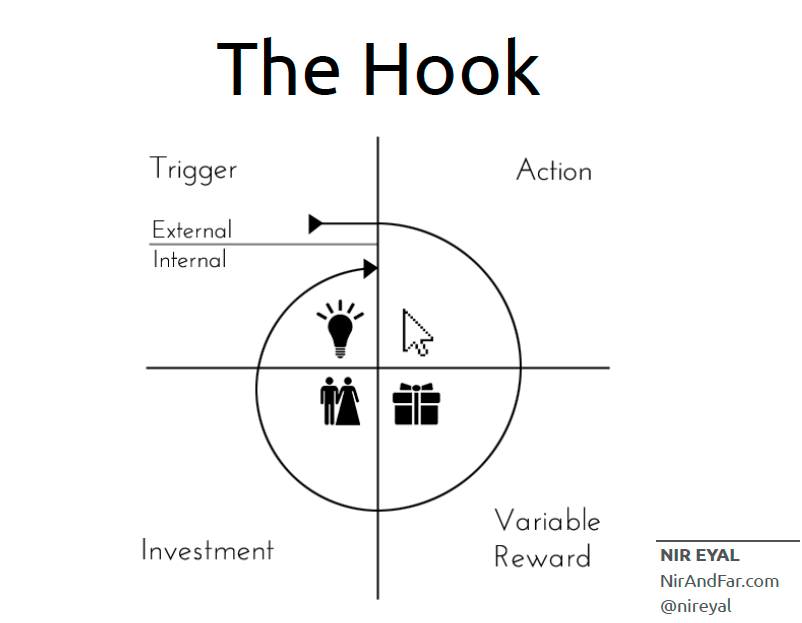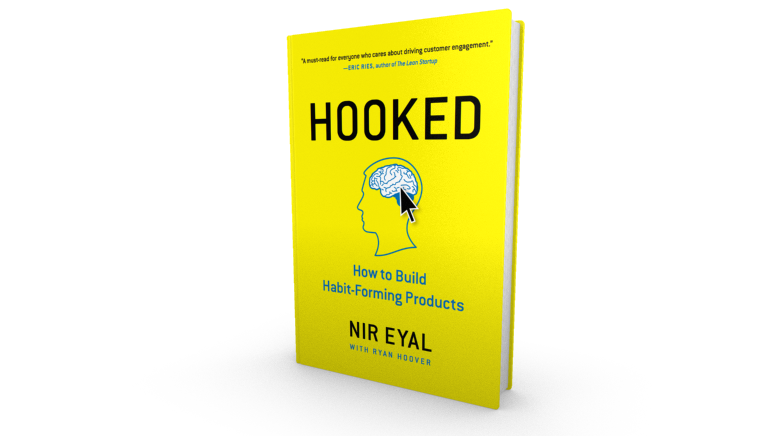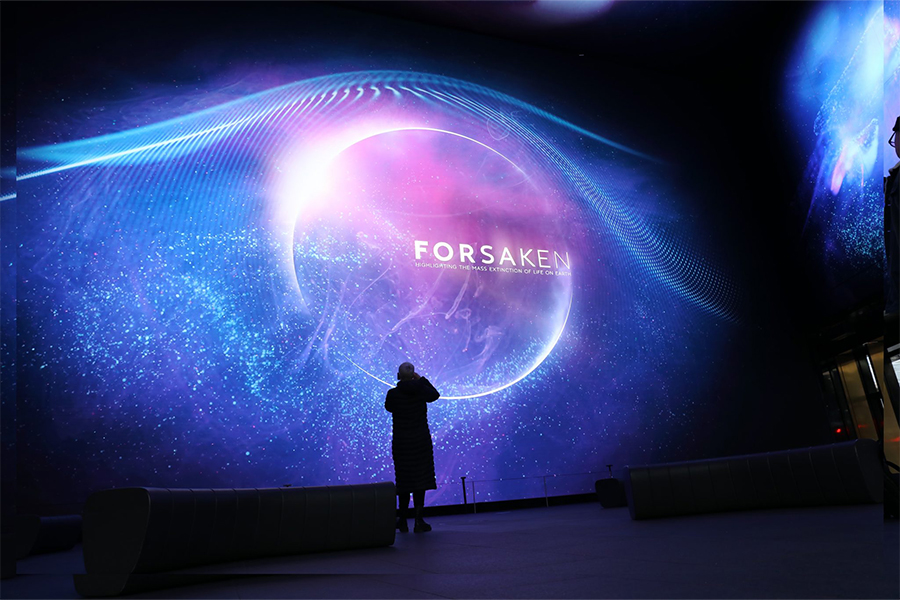- Hooked by WXO Founding Circle’s Nir Eyal contains a brilliant 4-step model for behaviour design
- Originally conceived for tech products, we think its insights should be applied for all experiences
Nir Eyal’s Hooked is a very good book.
Here are some of our favourite insights on behaviour and habits:
“help people do the things they already want to do but for lack of a solution don’t do”
“make your product so simple that users already know how to use it and you’ve got a winner”
Key tips on how to create tech products in terms of behaviour and habits:
- Take an age-old human desire, and use modern technology to take-out steps
- A product that requires significant behavioural change is doomed to fail
- The economic value of company is a function of the strength of the habits it creates. Create the habit first, then monetise: once the compulsion to play is in place and the desire to progress (this is gaming, but this works for others), then convert users into paying customers.
- Habits are not created — they’re built upon
Nir quotes innovation expert Denis Hauptly’s three steps to success:
1. Understand why someone does something
2. Layout the steps to achieve that goal
3. Remove/reduce the number steps to make it the simplest process
Key questions
Here are the key questions that Eyal asks through the book:
1. Who is your user?
2. What is your user story? (Hint: this should read like a play to make all else easy: customer development, usability studies, empathy maps, + understanding why?)
3. What is your user doing right before your intended habit?
4. What would users want to achieve by using your solution?
5. Where and when will they use it?
6. What emotions influence their use and will trigger them to action?
7. Does your users’ intended trigger frequently prompt them to action?
8. Is external trigger hitting people when they’re most likely to act?
9. Is design simple enough so the person acts? (And completes the action.)
10. Does the reward satisfy but leave your users wanting more?
11. Do users invest, store value, set future triggers?
12. How often should a user use your product?
13. What problem do I wish someone would solve for me?
14. What is making it difficult for the user to accomplish their desired action? Is it time? Are they tired? Is it socially awkward? Is it difficult to understand/complex?
This is similar to sociologist Everet Rogers’s five Qs which ask if an innovation is likely to take off. Together they spell BECOS:
(i) Is your solution Better?
(ii) Is your solution Easily available and easy to try out?
(iii) Is your solution Observable?
(iv) Is your solution Compatible with how we live now?
(v) Is your solution Simple to understand?
15. What is missing that would allow my users to take the next step?
16. What is limiting my users ability to accomplish tasks that will become habits?
“ Behaviour = motivation + ability + trigger”
17. What do users/people really want?
18. What pain is your product relieving?
19. What brings users to your service? (external trigger)
20. What “bit of work” do users invest in your product?
21. Does this “bit of work” set a future trigger, and store value to improve the product with use?
22. What is the simplest action users take in anticipation of reward, and how can you simplify your product to make this action easier?
23. Are users fulfilled — yet left wanting more?
24. How does your solution vary the reward?
24. Is doing easier than thinking?
25. How can you turn an external trigger into an internal trigger? (By getting the user to cycle thru the 4-step process.)
26. Is your product a painkiller or a vitamin?
How to make something easy to do
Its useful here to think about anything that holds a person back from doing something. According to Stanford University behaviour design professor BJ Fogg, there are six ways to measure simplicity
1. Time
2. Money
3. (physical) Effort
4. (mental) Effort
Key: think of the person’s scarcest resource at that moment: that’s your barrier
5. Social: is it socially deviant? Is it socially acceptable?
6. Routine: how compatible with or far from already established routine is it
Note how these 6 factors are virtually the same as Everett Rogers 5 questions.
The 4 step Hooked process

1. Trigger: it always starts with a trigger, which can be paid, earned, or owned thru a relationship.
Typical internal triggers: (= human desires, emotional needs, give psychological relief) bored, lonely, fear of missing out, fear of being forgotten, fear or forgetting, desire, fit in, stand-out; social rewards are a key motivator
2. Action!
Where, B=M+A+T
3. Variety!
Life is like a box of chocolates: variable rewards create craving.
Instant variable feedback turns a difficult path into an engaging challenge.
Add mystery to a goal… makes pursuit all the more enticing.
To hold attention, there needs to be a degree of novelty.
Make dopamine happen with relevant, irreverent, tantalising, and plain rewards.
This is why UGC is so good: it results in infinite variability.
4. Investment => stored value
Consider Facebook: “The collection of memories and experiences becomes more valuable over time and the service becomes harder to leave as users’ personal investment in the site grows.”
There is much more in the book. A useful summary in video form:






